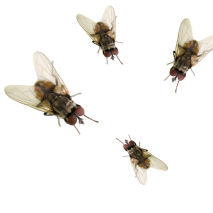
Pest & Property Solutions Ltd
28 Maes Y Wennol
Miskin
Pontyclun
Rhondda Cynon Taf
Wales
F72 8SB
OFFICE: 02922 404605
ONSITE: 07825 722312
EMAIL: Click to send
Contact Us
Services
Quick Links
Pest & Property Solutions Ltd 2025 all rights reserved. Incorporated in England and Wales. Company Registration No 13412263 VAT 463 3281 95
Registered Office Address: 28 Maes Y Wennol, Miskin, Pontyclun, RCT, CF72 8SB. GDPR Compliancy Statement

Cluster flies, scientifically known as Pollenia, are a common yet often overlooked insect species that belong to the Calliphoridae family. These flies, distinct from typical houseflies, play a unique ecological role and can become pests in certain contexts.
Cluster flies are characterized by their larger size compared to houseflies and a distinct behaviour of aggregating in clusters, particularly during the colder months. Unlike houseflies, cluster flies have a relatively slow and clumsy flight pattern.
The life cycle of cluster flies begins with their eggs laid near earthworm burrows. Larvae hatch and parasitise earthworms, completing their development in the soil. As adults, cluster flies emerge and seek shelter in buildings to overwinter, creating clusters in attics, wall voids, or other protected spaces.
While cluster flies might be considered pests indoors, they serve ecological roles as decomposers and pollinators outdoors. Their larval stage contributes to nutrient recycling by feeding on earthworms, and adult cluster flies play a role in pollination as they feed on nectar.
Cluster flies become problematic when they seek refuge indoors during the Aghtumn. As temperatures drop, they gather in large numbers, often invading homes and other structures. Their presence can be a nuisance, and the accumulation of dead flies in hidden spaces can lead to unpleasant odours.
Managing cluster flies involves a combination of preventive measures and control methods. Sealing entry points, repairing damaged screens, and using insecticides in appropriate areas are common strategies. However, control can be challenging due to the flies' ability to find small openings.
Cluster flies do not pose direct health risks to humans, as they do not transmit diseases. However, their presence can be irritating and may trigger allergies in some individuals. Additionally, the annoyance factor increases when these flies gather in noticeable clusters, especially in living spaces.
Cluster flies play a dual role in ecosystems, contributing positively as decomposers and pollinators outdoors but becoming pests when seeking shelter indoors. Understanding their life cycle, behaviour, and implementing effective control measures are crucial for minimizing their impact on human living spaces. While not harmful in the traditional sense, cluster flies highlight the intricate balance between insects and human habitats, emphasizing the need for integrated pest management strategies.
BUGWIKI
Cluster Flies
Contact us for more information or help with any of our services
OFFICE: 02922 404605
ONSITE: 07825 722312
